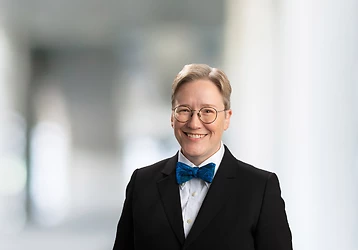The Latest Development in the Saga of Spectrum for Connected Cars
The saga involving the allocation of spectrum for connected cars by the Federal Communications Commission is a long and twisting one. Back in 1999, the FCC allocated 75 MHz of spectrum in the 5.9 GHz band for the Dedicated Short Range Communications (DSRC) Service, which would be used for vehicle-to-vehicle (V2V) and vehicle-to-infrastructure (V2I) communications. And then in 2013, the FCC issued a notice of proposed rulemaking (NPRM) to allow unlicensed services such as Wi-Fi to share that spectrum, ostensibly on a non-interfering basis. The FCC observed that there had not been much progress in deploying DSRC in the 13 years since the spectrum had been allocated. Some two years after the issuance of the 2013 NPRM, the FCC, in consultation with NHTSA and the Department of Transportation, established a three-phase plan for testing to determine whether the unlicensed services could safely operate in the DSRC band without causing harmful interference to the V2V services. Only the first phase of that testing program was completed, which occurred in October 2018. More recently, on December 17, 2019, the FCC issued a new NPRM to address the 75 MHz of DSRC spectrum in the 5.9 GHz band.
https://www.fcc.gov/document/fcc-seeks-promote-innovation-59-ghz-band-0
In the new NPRM, the FCC preliminarily concluded that conducting the next two phases of the sharing testing would take too long, and given changes in technology, it made no sense to have the unlicensed services and V2V services sharing spectrum. Thus, the FCC now proposes to reduce the amount of spectrum allocated for V2V services from 75 MHz to 30 MHz, and to re-allocate the lower 45 MHz portion of the band to unlicensed services. In addition, the FCC proposes to further divide up the 30 MHz of spectrum V2V spectrum by technology – 20 MHz would be assigned to the newer cellular V2X technology, and the other 10 MHz would either be assigned to DSRC technology or cellular V2X, depending on whether the DSRC proponents can justify continued use of that technology.
The NPRM thus asks fundamental questions regarding re-allocating spectrum between V2V and unlicensed Wi-Fi, and then also between two different V2V technologies – cellular V2X and DSRC. To some extent, the FCC is taking a “Solomonic” approach and ordering the baby to be cut in half. King Solomon’s solution may have worked under those particular circumstances, but in this context, a half of a baby may not be very useful. In addition, the new NPRM posits a number of questions regarding the technical rules that should apply to these different potential uses of the 75 MHz of spectrum. Finally, the NPRM asks a number of questions regarding the potential costs and benefits of its proposals. And ironically, the FCC suggests that a significant benefit of its proposal is to eliminate uncertainty surrounding V2V spectrum, but without acknowledging that the Commission itself created the uncertainty in 2013 when it first proposed Wi-Fi sharing of this band.
Comments on the FCC’s new NPRM will be due 30 days after the Notice is published in the Federal Register, and Reply Comments will be due another 30 days thereafter. Please let us know if you have any questions about this FCC proceeding, or if you would like Butzel Long’s assistance in filing comments.
Steve Goodman
202.454.2851
goodman@butzel.com
Jennifer Dukarski
734.213.3427
dukarski@butzel.com











